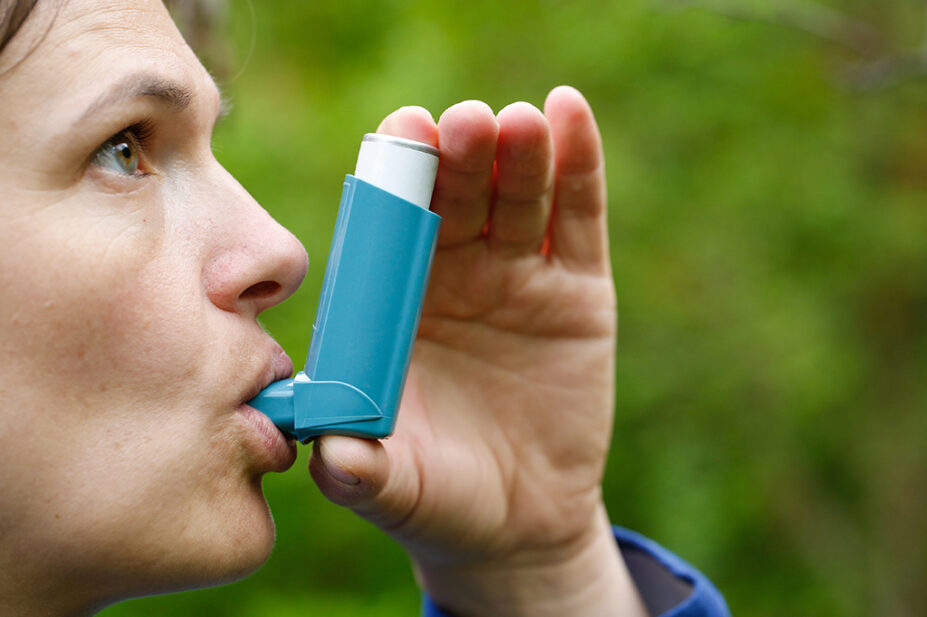
Shutterstock.com
Poorly controlled asthma generates eight times more excess greenhouse gas emissions per person than well controlled asthma, a study has found.
The retrospective cohort study, published in the online journal Thorax on 27 February 2024, looked at more than 230,000 patients with asthma registered with the UK Clinical Practice Research Datalink. It found that, scaled to a national level, the overall carbon footprint of asthma care in the UK is 750,540 tonnes of carbon dioxide equivalent (CO2e) per year, with poorly controlled asthma contributing nearly 80% of these emissions.
The study, funded by AstraZeneca and part of the ‘healthCARe-Based envirONmental cost of treatment’ (CARBON) programme, estimated greenhouse gas emissions for asthma-related medication use, healthcare resource utilisation and exacerbations during follow-up of patients with asthma classified at baseline as well controlled or poorly controlled.
Poorly controlled asthma was defined as three or more short-acting beta-agonist (SABA) inhaler prescriptions per year or one or more exacerbations (temporary worsening of asthma requiring a short course of oral corticosteroids, an emergency department visit or hospitalisation). Just under half of patients in the study (47.3%) had poorly controlled asthma at baseline.
As well as looking at overall greenhouse gas emissions, the researchers estimated excess greenhouse gas emissions owing to suboptimal asthma control, indicated by three or more SABA inhaler prescriptions per year, exacerbations and any GP and outpatient visits within ten days of hospitalisation or emergency department visit.
Poorly controlled asthma contributed excess greenhouse gas emissions of 303,874 tonnes of CO2e during the first year of follow-up, equivalent to that produced by 124,000 homes in the UK. This was 8.1-fold higher per capita than well controlled asthma.
Most of the excess greenhouse gas emissions came from inappropriate SABA use (90%), with the rest coming from use of healthcare resources, such as GP and hospital visits.
“These findings indicate that efforts to improve asthma treatment practices to curtail high SABA use as part of an overall management strategy that seeks to implement evidence-based treatment recommendations and address other contributing factors to poor asthma control, such as suboptimal adherence to medication and poor inhaler technique, could result in substantial carbon savings,” the researchers concluded.
Commenting on the study, Darush Attar-Zadeh, clinical fellow respiratory pharmacist at North West London Integrated Care Board and co-chair of the Taskforce for Lung Health medicines optimisation working group, said: “Empowered and knowledgeable patients who know how to use the right medicines (inhaled corticosteroid containing) at the right time and in the right device will have better outcomes.
“If we can get the basics right then this will not only be good for the patient but also for the planet and help reduce costs in an already stretched NHS,” he said, adding that, by being proactive, healthcare professionals can use clinical systems to identify people who are not living well with asthma, such as excess SABA users.


